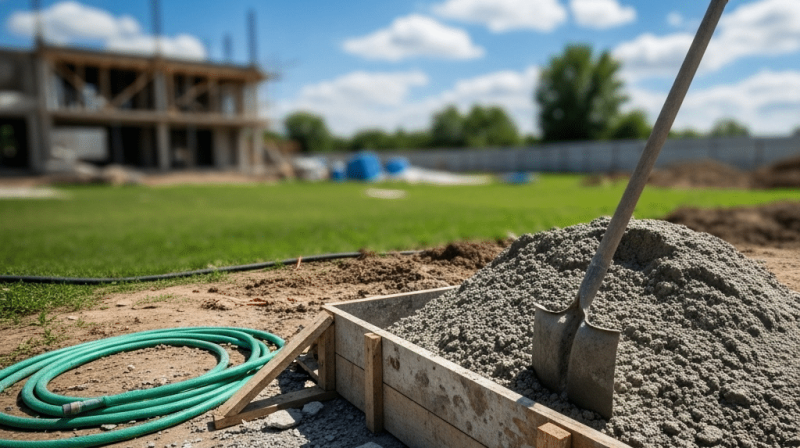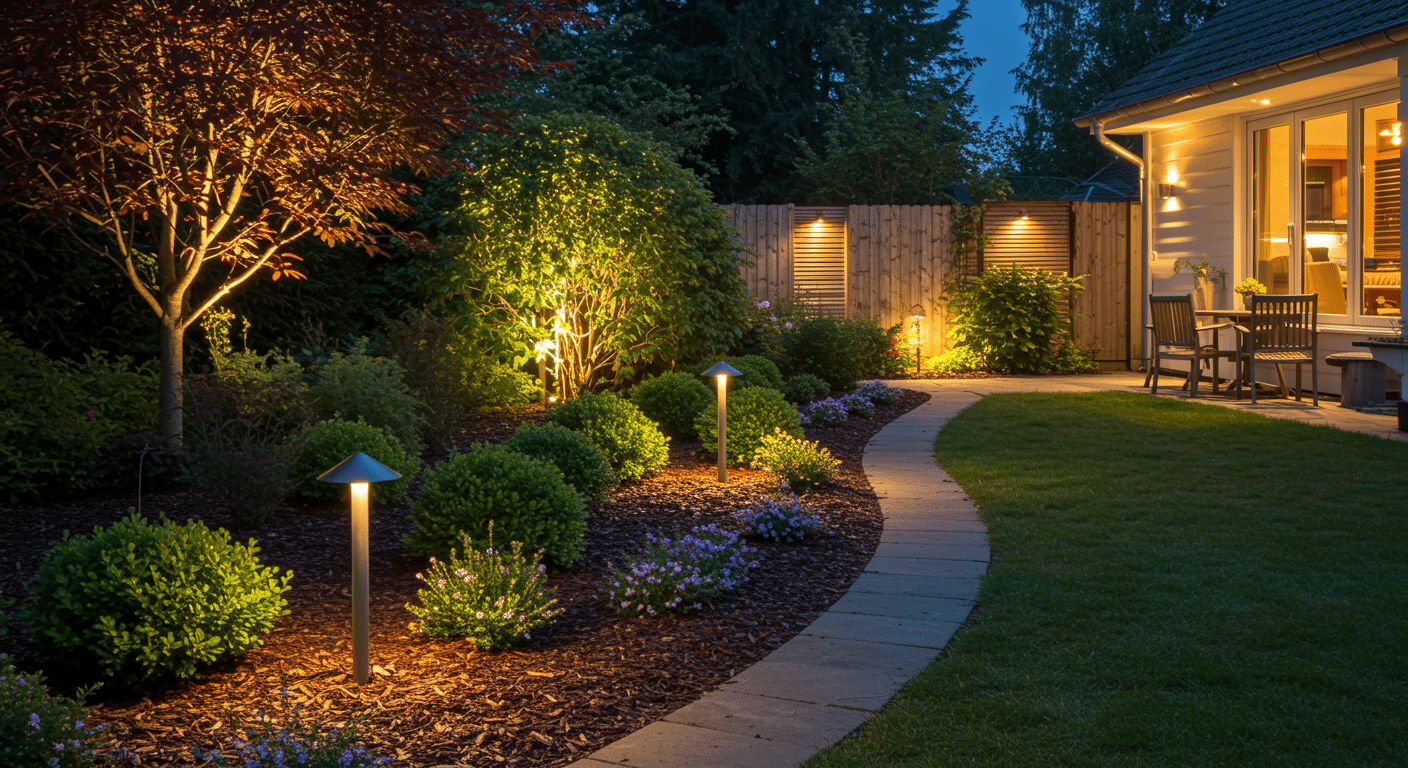Most homeowners think concrete projects require expensive equipment and professional help. They often avoid DIY concrete work because mixing seems too complicated.
However, there’s a simpler method that many people are unaware of.
Dry pour concrete offers a different approach that can save time and reduce mess. This technique lets you skip the traditional mixing step.
This guide covers everything about dry-pour concrete. You’ll learn when it works best, how to do it right, and what problems to avoid.
What is Dry-Pour Concrete Method?
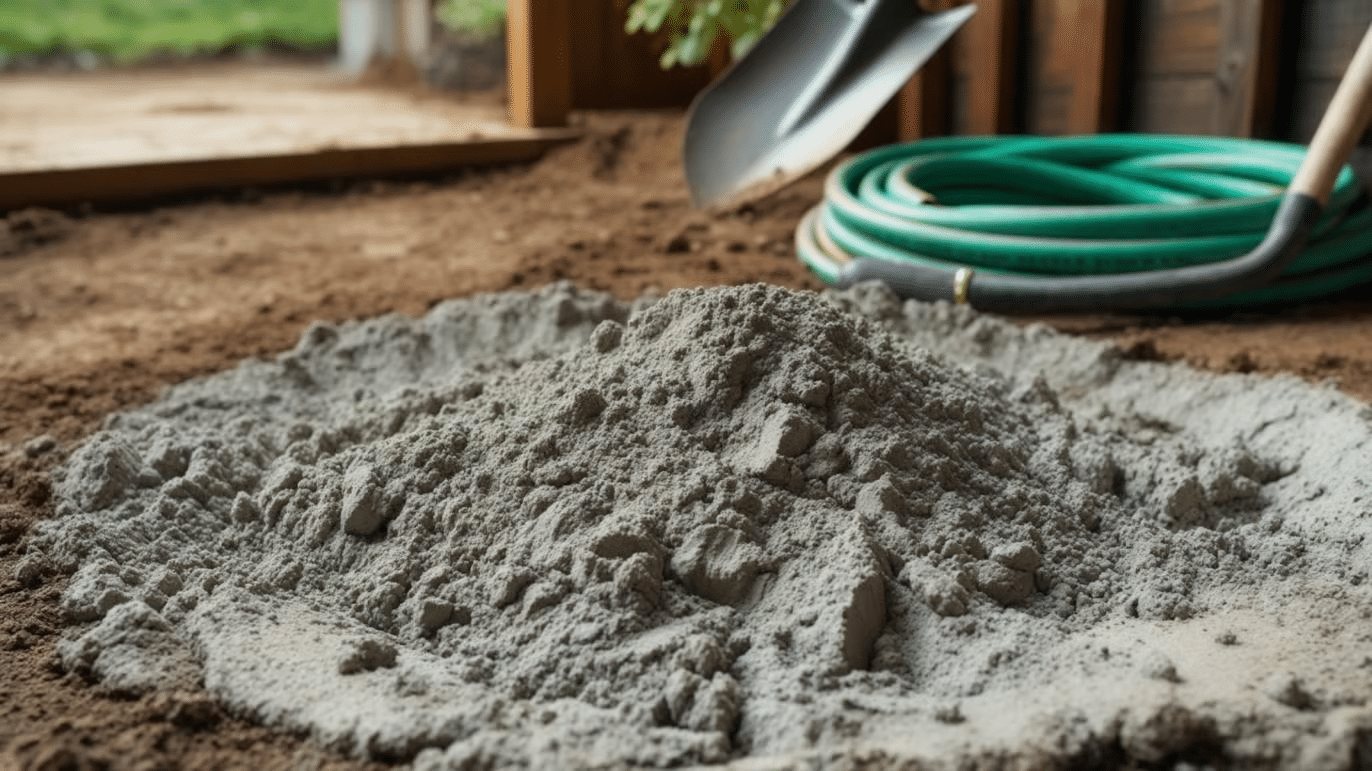
Dry pour concrete, also known as dry-mix concrete, is a construction method that uses pre-mixed concrete powder without adding water prior to placement.
This technique involves pouring the dry concrete mix directly from the bag into the desired location. The dry mixture contains all necessary ingredients, including cement, sand, and gravel, in proper proportions.
Unlike traditional concrete methods, dry-pour concrete eliminates the need for mixing equipment or wheelbarrows. The dry powder stays workable until water is added.
This makes it ideal for small projects and tight spaces where traditional concrete mixing becomes challenging. Many contractors and DIY enthusiasts choose this method for fence post installation and minor repair work because it reduces preparation time and cleanup efforts.
Best Applications for Dry Pour Concrete
Choosing the right application for dry pour concrete makes the difference between project success and failure. This method excels in specific situations while falling short in others.
Ideal Applications for Dry-Pour Concrete Projects
- Small concrete slabs: Perfect for garden paths, small patios, or workshop floors under 50 square feet.
- Tool shed or utility floors: Great for basic flooring that doesn’t need a smooth finish or heavy load capacity.
- Precast components: Works well for garden borders, planters, or simple concrete blocks made in molds.
- Footings for fences or posts: Excellent choice for setting fence posts, mailboxes, or light structural supports.
- Non-load-bearing elements: Suitable for decorative walls, planters, or other features that don’t carry structural weight.
Unsuitable Applications: When Not to Use Dry Pour Concrete
- Driveways and sidewalks: These surfaces need smooth finishes and consistent strength that dry-pour can’t provide reliably.
- Large-scale pours: Projects exceeding 100 square feet become challenging to manage due to the proper distribution of water and compaction.
- Cold climates or freezing conditions: Temperatures below 40°F prevent proper curing and can cause concrete failure.
- Decorative or high-finish surfaces: Smooth, polished, or stamped concrete requires traditional mixing for quality results.
- Structural elements: Foundation walls, beams, or load-bearing components require controlled mixing for safety and strength.
How Does Dry-Pour Concrete Work?
The dry pour concrete method begins by placing dry concrete mix directly into your prepared forms or holes.
Instead of mixing with water beforehand, you pour the dry mix straight from the bags into the work area.
After placement, water is added slowly over the top. As it soaks in, it triggers a chemical reaction with the cement, gradually hardening the mix into solid concrete.
To carry out the process, you’ll typically need:
- Pre-bagged concrete mix (with cement, sand, and gravel)
- Fast-setting mix for time-sensitive projects
- Shovel or scoop for placement
- A garden hose or watering can for controlled watering
- Tamping tool for compacting the mix
Depending on the project size, variations in the method are common.
Some contractors layer dry mix and water in alternating sections to improve saturation. For larger-scale jobs, specialized dry mix trucks may be used to deliver the material directly, improving efficiency and consistency.
Advantages of Dry-Pour Concrete Method
Dry-pour concrete offers several benefits that make it appealing for many construction projects. Understanding these advantages helps you decide if dry-pour concrete fits your specific needs and project requirements.
Consistency and Quality Control
Pre-mixed dry concrete comes with exact ingredient ratios that ensure consistent results every time. You don’t need to worry about measuring cement, sand, and gravel proportions correctly.
The factory mixing process eliminates human error in material ratios. This consistency leads to more predictable strength and durability in your finished concrete work.
Cost and Labor Savings
Dry-pour concrete reduces equipment needs since you don’t require mixers or large machinery. Labor costs drop because the process needs fewer workers and less time on site.
You can complete projects faster with minimal cleanup afterward. The reduced equipment rental and labor expenses make this method budget-friendly for smaller construction jobs.
Fast Setting Times
Many dry-pour concrete mixes cure faster than traditional methods, especially fast-setting varieties.
Projects like fence posts can be ready within hours instead of days. The faster timeline helps reduce project delays and weather-related complications.
Drawbacks to Consider with this Method
While dry-pour concrete offers many benefits, it also presents certain challenges and limitations. These drawbacks can affect project quality and success if not properly addressed.
Understanding these limitations helps you make informed decisions about when to use this method versus traditional concrete mixing approaches:
Mixing and Quality Concerns
Achieving uniform water distribution through dry concrete can be difficult without a proper technique. Segregation may occur when heavier materials settle to the bottom while lighter particles stay on top. Air pockets can form if water doesn’t penetrate evenly throughout the mix.
Limited Working Time
Once you add water to dry concrete, you have very little time to make adjustments or corrections. The setting process begins immediately and cannot be stopped or reversed.
This short window makes it challenging to fix placement errors or achieve smooth finishes. Quick decision-making becomes essential to avoid costly mistakes during installation.
Equipment Investment
Specialized dry mix delivery systems require significant upfront costs for contractors. Large-scale dry-pour operations require custom trucks and dispensing equipment.
These investments may not yield a return for smaller construction companies. The initial equipment expense can make this method less economical than traditional concrete mixing for many businesses.
Tips and Best Practices for Dry Pouring Concrete
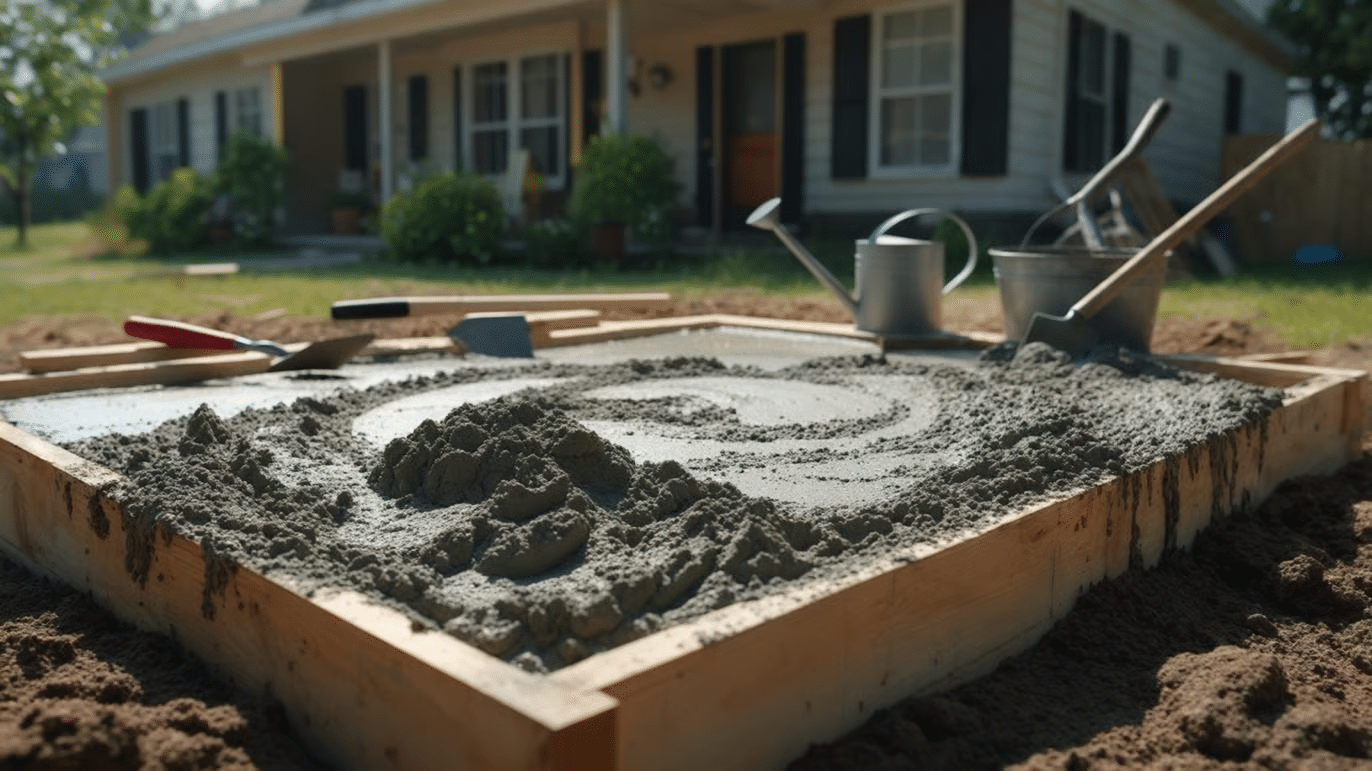
Success with dry pour concrete depends on following proper techniques and avoiding common mistakes. These practices help ensure strong, durable results that meet your project requirements:
- Add water gradually in small amounts: Pour water slowly across the surface rather than dumping it all at once. This prevents over-saturation and helps achieve even distribution throughout the mix.
- Compact the mix thoroughly: Use a tamping tool or rod to eliminate air pockets and ensure proper consolidation. Work systematically across the entire surface area.
- Check moisture levels carefully: The mix should feel damp but not soggy. Too much water weakens the concrete, while too little prevents proper curing.
- Use proper tools for the project size: Small jobs require basic hand tools, such as shovels and tampers. Larger projects may require mechanical compaction equipment for best results.
- Work in sections for bigger areas: Complete one section at a time rather than trying to handle the entire project at once. This maintains quality control throughout the process.
- Allow proper curing time: Don’t rush the setting process. Follow manufacturer recommendations for cure times before removing forms or applying loads.
Dry-Pour Method vs. Wet Pour Concrete Method
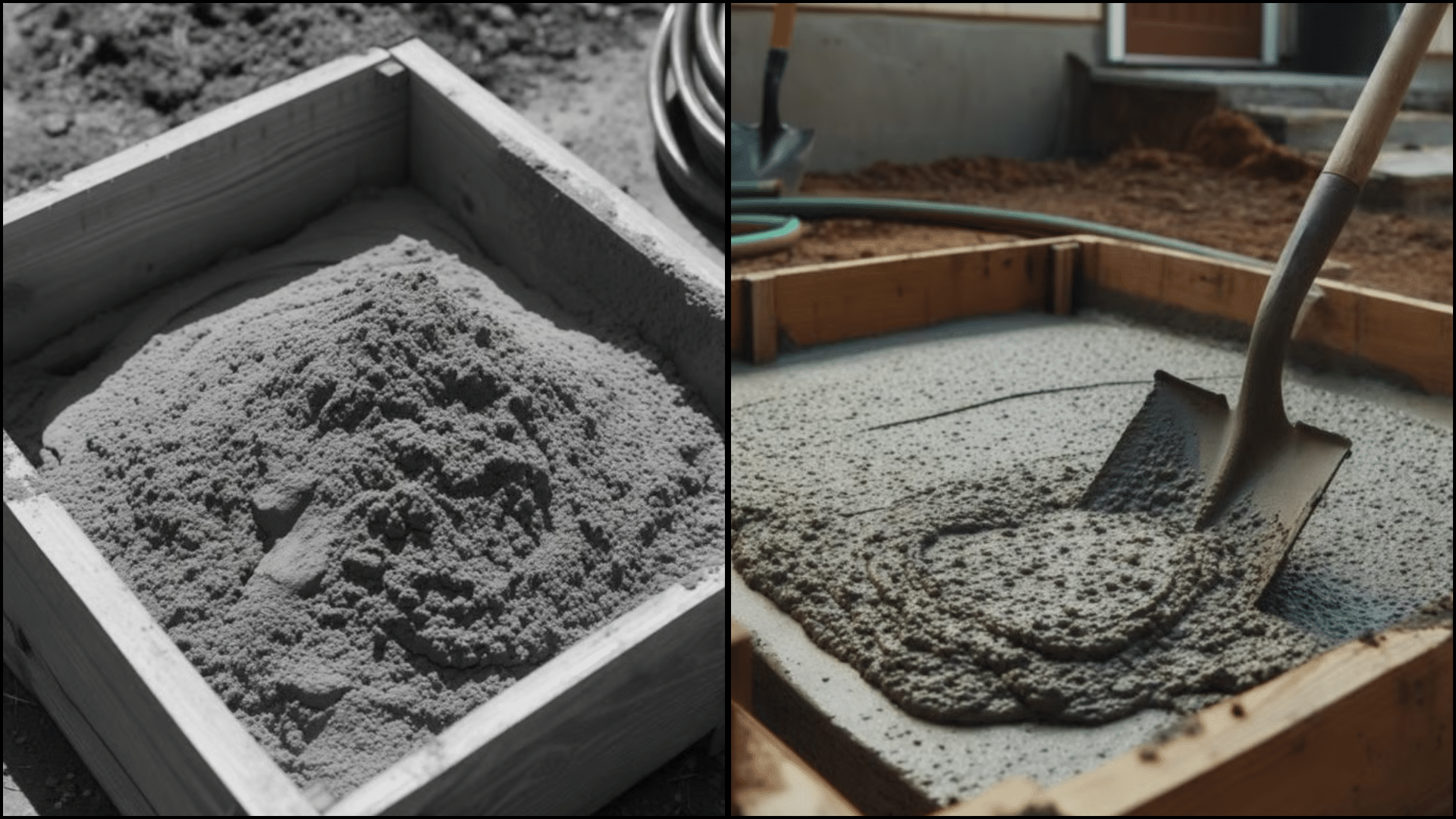
When planning concrete projects, you have different methods to choose from, each serving specific construction needs.
Both methods have their place in modern construction, but dry-pour concrete has become increasingly popular in renovation projects where quick fixes and minimal disruption are priorities.
| Feature | Dry-Pour Concrete | Wet Pour Concrete |
|---|---|---|
| Mixing | On-site, after placement | Pre-mixed before placement |
| Labor/Equipment | Lower requirements | Higher requirements |
| Water Usage | Less water needed | More water used |
| Setting Time | Faster curing | Standard curing time |
| Quality Control | High (pre-mixed ratios) | High (controlled batching) |
| Best For | Small, simple projects | Large, structural projects |
| Limitations | Not for heavy load/decorative work | More labor, equipment, potential waste |
Final Thoughts
Dry pour concrete offers a practical solution for small-scale construction projects when you need quick results without heavy equipment.
However, remember that dry-pour concrete has clear limitations, and the technique demands careful attention to water distribution to avoid weak spots or air pockets.
When used appropriately, this method can save time and money while delivering solid results.
Have you tried dry-pour concrete on your projects? Share your experience in the comments below!
We’d love to hear about your successes, challenges, or any tips you’ve learned along the way.


